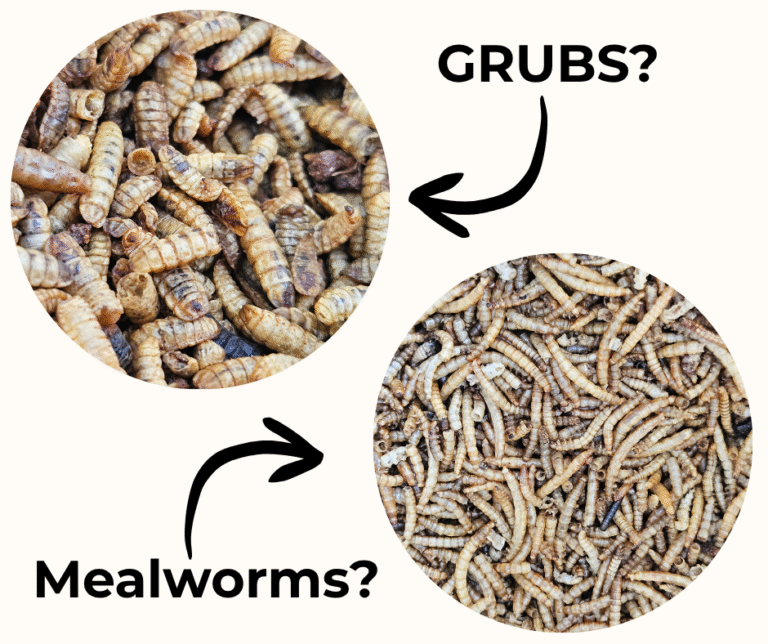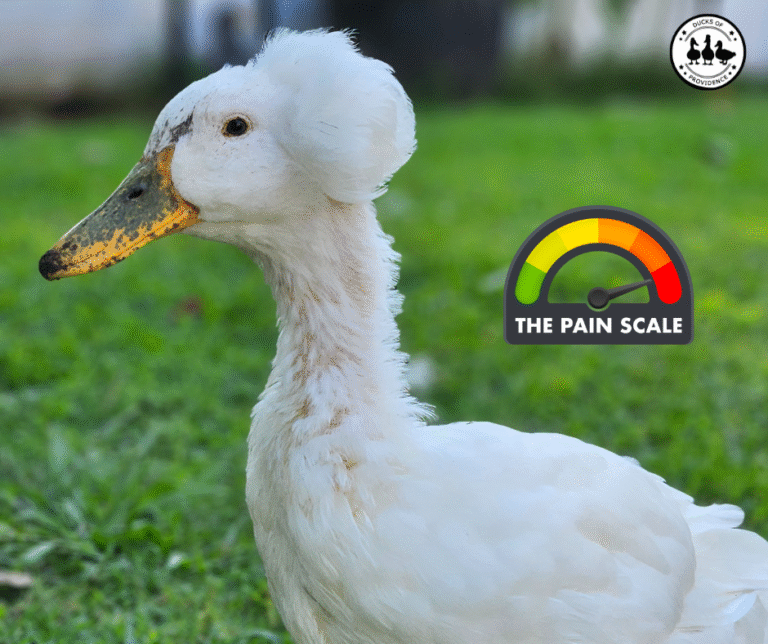
Saxony Ducks: A Calm and Beautiful Breed for Backyard Flocks
Saxony Ducks are a rare and beautiful breed known for their calm personalities, elegant plumage, and excellent utility as both egg layers and meat birds. Originally developed in Germany, these ducks have gained a loyal following among backyard duck keepers who appreciate their friendly nature and striking appearance. Whether you’re looking to expand your flock with a gentle and hardy breed or you’re simply curious about what makes Saxony Ducks special, this guide covers everything you need to know—from their history and characteristics to their care requirements and how they compare to other popular duck breeds.
Ducks of Providence is free, thanks to reader support! Ads and affiliate links help us cover costs—if you shop through our links, we may earn a small commission at no extra cost to you. Thanks for helping keep our content free and our ducks happy! 🦆 Learn more
Saxony Duck Breed Characteristics
| Trait | Drake (Male) | Hen (Female) |
|---|---|---|
| Weight | ~9–10 lbs (4.1–4.5 kg) | ~7–8 lbs (3.2–3.6 kg) |
| Plumage Color | Blue-gray head, chestnut breast, white neck ring, silver-gray body | Soft buff with creamy white eye stripes |
| Bill Color | Yellowish-orange | Orange to light orange |
| Leg & Foot Color | Orange | Orange |
| Body Shape | Broad, deep body; well-muscled | Full-bodied, slightly lighter frame |
| Posture | Horizontal to slightly upright | Horizontal to slightly upright |
| Eye Color | brown | brown |
| Feather Quality | Tight, smooth, and weather-resistant | Same |
| Flight Ability | Limited; heavy build prevents flying | Same |

History and Origin
The Saxony Duck is a relatively modern breed with roots in 1930s Germany. It was developed by Albert Franz, a dedicated breeder from Saxony, who aimed to create a dual-purpose duck that combined beauty, productivity, and good temperament. To achieve this, Franz carefully crossed several well-established breeds: German Pekins, Blue Pomeranians, and Rouens.
The result was a duck that stood out not just for its utility—providing both meat and eggs—but also for its stunning appearance. Saxony Ducks quickly gained attention for their soft buff and blue-toned plumage, particularly the males, whose coloring is often described as “mature mallard with pastel tones.”
However, the breed’s development faced a major setback during World War II. Most of Franz’s original stock was lost in the chaos of the war. Fortunately, he resumed his breeding efforts in the post-war years, and by 1957, the Saxony Duck was officially recognized as a breed in Germany.

Despite their early success in Europe, Saxony Ducks remain rare in the United States. They were first imported in the 1980s and were later recognized by the American Poultry Association in 2000. Due to their limited numbers, they are still considered a threatened breed by the Livestock Conservancy, making them a meaningful choice for those interested in breed conservation.
Today, Saxony Ducks are treasured by pet owners and small-scale farmers alike for their calm demeanor, practical uses, and rich history of resilience.
Appearance and Color Varieties
Saxony Ducks are truly eye-catching birds, known for their graceful build and unique coloring that sets them apart from more common backyard breeds. Developed with aesthetics in mind as well as utility, their plumage is both elegant and practical, offering good feather quality and weather resistance.
General Features
Saxony Ducks are a heavy breed with a well-rounded, full body and broad chest. Their posture is typically horizontal to slightly upright, giving them a balanced and alert appearance without seeming overly upright like Indian Runners or too flat like some meat breeds.
- Drakes (males) weigh around 9 to 10 pounds (4.1–4.5 kg)
- Hens (females) are slightly smaller, averaging 7 to 8 pounds (3.2–3.6 kg)
Both sexes have a soft, dense feathering and strong orange legs and feet.

Plumage Details
- Drakes: The males have a very distinct and refined look. Their heads are a soft blue-gray, complemented by a white neck ring and a rich chestnut-colored breast. Their back and flanks are a lighter silvery-gray, giving them a somewhat pastel-toned version of the mallard coloration, but with a gentler, more muted finish.
- Hens: Female Saxonies wear a lovely warm buff color, paired with creamy white facial stripes that extend from the eye area toward the back of the head—sometimes referred to as “eyebrows.” Their plumage is even and soft, with a uniform warm tone that’s especially beautiful in natural sunlight.
Bill and Leg Color
- Bills are typically yellow-orange in drakes and lighter orange in hens, often with slight variations depending on age and diet.
- Legs and feet are a sturdy orange, and their build supports their heavier weight well.
Color Varieties
In most backyard flocks, Saxony Ducks are found in just one color variety, the buff-blue mallard pattern described above. This is the standard and recognized coloration for the breed in both Germany and the United States. There are no officially recognized alternative color varieties.
What Do Saxony Ducklings Look Like?
Saxony ducklings are absolutely adorable and easy to distinguish once you know what to look for. At hatching, they have a soft, peachy buff down that may appear creamy or slightly golden in tone. One of their most distinctive features is the presence of faint eye stripes, especially in the females, hinting at the adult hen’s signature facial markings.
Compared to yellow ducklings like Pekins, Saxony ducklings have a warmer, more apricot-colored hue. They usually have light orange bills and feet, similar to what they will have as adults.

As they grow, their feathering starts to show early signs of their adult plumage:
- Males may start developing slate-blue and chestnut tones by a few weeks of age.
- Females will gradually transition into their soft buff coloring, with more pronounced white eye stripes becoming visible as their feathers come in.
Because Saxonies are a sex-linked color breed, experienced breeders can often tell males and females apart early on, especially once feather growth begins.
Temperament and Behavior
Saxony Ducks are widely praised for their gentle nature and easygoing temperament, making them one of the best choices for pet owners and backyard duck enthusiasts looking for a calm, friendly breed. Their behavior is shaped by both their genetics and their upbringing, but overall, Saxonies tend to be well-mannered, social, and adaptable.
Calm and Friendly Disposition
One of the standout traits of Saxony Ducks is their docility. They are not as nervous or flighty as some lighter breeds like Campbells or Runners. With regular human interaction, Saxonies often become very comfortable around people, and many owners report that their ducks will happily follow them around the yard or waddle up for treats.
Social Flock Members
Saxony Ducks are naturally social animals and thrive in a flock setting. They generally get along well with other ducks and can also integrate into mixed-breed flocks if introduced properly. Their balanced temperament makes them less likely to be bullies or to get picked on, especially when space and resources are adequate.

Foraging and Activity Level
These ducks are active foragers, enjoying the opportunity to roam and search for insects, seeds, and plants. While they appreciate space to explore, they are not as intensely energetic as some lighter egg-laying breeds. Their heavier build means they’re less prone to escape attempts and do not fly, making them easier to manage in backyard settings.
Noise Level
Another bonus for urban or suburban duck keepers: Saxony Ducks are relatively quiet. While hens will make noise when they lay eggs or if they’re startled, they are generally not as vocal as breeds like Khaki Campbells or Calls. Drakes, as with all breeds, make soft rasping sounds rather than loud quacks.
Interactions with Children and Pets
Because of their calm demeanor, Saxonies are often recommended for families with children. They tolerate gentle handling well and are unlikely to bite or panic. Of course, as with any animal, supervised interaction is key to keeping both ducks and kids safe and happy.

Egg Production
While Saxony Ducks are not the most prolific layers among domestic duck breeds, they still offer a reliable number of eggs each year—especially considering their dual-purpose background. Their egg production is typically moderate, making them a great fit for families or small flocks where a balance of eggs, personality, and appearance is valued.
Annual Egg Count
On average, a healthy Saxony hen will lay 100 to 160 eggs per year. This puts them below high-production breeds like the Khaki Campbell or Welsh Harlequin, but still within a very reasonable range for homesteaders and backyard keepers who want fresh eggs without being overwhelmed by volume.
Egg Appearance
Saxony Ducks usually lay large, white to tinted eggs. The eggs are similar in size to those from other heavy breeds and are excellent for baking and cooking. Some hens may produce eggs with a very light beige or cream tint depending on diet and genetics.
Laying Season and Patterns
Like many heritage breeds, Saxony Ducks tend to lay seasonally. They often begin laying in early spring and may continue into the fall, especially with proper lighting and nutrition. During the winter months, production may slow down or pause altogether, which is natural and helps preserve the ducks’ energy.
Broodiness and Mothering
Saxony hens are not particularly broody, meaning they rarely go out of their way to sit on a nest and hatch their eggs. However, if a hen does go broody, she can make a very attentive and capable mother. Their large size and calm nature help them care for ducklings safely, but don’t expect broodiness to be a regular trait.
Hardiness and Care
Saxony Ducks are a hardy and resilient breed, well-suited for a variety of climates and backyard environments. Their heritage as a dual-purpose farm duck means they’re not only beautiful but also practical and relatively low-maintenance with the right setup.

Climate Adaptability
One of the strengths of the Saxony breed is its cold hardiness. They have dense, insulating plumage that helps them withstand chilly winters, especially if provided with dry bedding and a draft-free shelter. While they do well in colder regions, Saxony Ducks also tolerate warm climates when given access to shade and plenty of fresh, cool water. During hot summer months, it’s important to offer relief from the sun and ensure they can dip in water to regulate body temperature.
Housing Needs
As a heavyweight duck, Saxonies aren’t prone to flying, so fencing doesn’t need to be excessively high. However, they do need secure housing at night to protect against predators. A sturdy coop with proper ventilation and dry bedding—such as straw, pine shavings, or hemp—is ideal. Allow at least 4–6 square feet per duck inside the coop and 10–25 square feet per duck in an enclosed run, especially if they don’t free-range.

Water and Foraging
Like all ducks, Saxonies love water. They don’t require a pond, but they do need access to clean water deep enough to dunk their heads to clean their eyes and nostrils. Kiddie pools or water troughs work well and should be refreshed regularly. Saxonies are enthusiastic foragers and will happily spend their days searching for bugs, weeds, and fallen fruit if given the opportunity.
Diet and Nutrition
A balanced diet is essential for keeping your Saxony Ducks in good health and productive during the laying season. Start ducklings on a non-medicated starter with 20–22% protein and extra niacin, and transition to a layer or maintenance feed as adults, depending on their laying cycle. Supplemental greens, grains, and calcium (like oyster shell) are also beneficial.
Special Considerations for Pet Owners
If you’re considering Saxony Ducks as part of your backyard flock or as feathered companions, there are a few breed-specific traits and care considerations that pet owners should keep in mind. While they are generally low-maintenance compared to other breeds, their size and temperament mean they benefit from thoughtful planning and regular attention.
Space Requirements
Saxony Ducks are large birds, and their size means they need ample space to move around comfortably. Overcrowding can lead to stress, feather damage, and health issues. While they don’t require a pond, they do appreciate room to waddle, forage, and bathe, so a well-drained yard or spacious run is ideal.

Gentle but Not Lap Ducks
While Saxony Ducks are very calm and sociable, they’re not typically the kind of duck that naturally enjoys frequent handling or being picked up—especially if they haven’t had much interaction with humans early in life. However, when raised with regular, gentle handling from the duckling stage, many Saxonies become noticeably more relaxed and even affectionate toward their caregivers. Some individuals may grow to enjoy being held or sitting on your lap, especially if they associate your presence with positive experiences like treats, clean water, or attention.
They’re wonderfully responsive birds—often coming when called, following you around the yard, and greeting you with soft vocalizations. So while they may not start out as lap ducks, with time, trust, and patience, many Saxonies become surprisingly cuddly and deeply bonded companions. They’re a great fit for those seeking a pet duck with a balanced temperament—social and friendly, but not overly demanding of physical affection unless they’ve been raised that way.
Compatibility with Other Animals
Their peaceful nature makes them a great addition to mixed flocks, and they usually get along well with chickens, other duck breeds, and even rabbits (with proper supervision). However, drakes can become territorial during breeding season, so flock dynamics should be monitored, especially if multiple males are present.

Special Attention to Feet and Weight
Due to their heavier body structure, Saxony Ducks can be prone to pressure-related foot issues, such as bumblefoot, especially if they’re kept on hard surfaces or in wet, unsanitary conditions. Providing soft, clean bedding, rotating forage areas, and maintaining a healthy weight through proper diet and activity can help prevent problems.
Conservation Status
Saxony Ducks are listed as a “threatened” breed by the Livestock Conservancy, which means that by choosing this breed, you’re also helping preserve genetic diversity in domestic waterfowl. Responsible breeding and thoughtful flock management can make a positive impact on the breed’s future.
Saxony Ducks vs. Other Breeds
Saxony Ducks are often compared to other calm, dual-purpose, or similarly colored breeds—such as Silver Appleyards, Buff Orpingtons, and Welsh Harlequins. While they share traits with these breeds, Saxonies bring their own unique combination of temperament, beauty, and rarity to the backyard.
Saxony vs. Silver Appleyard
Both breeds are heavy, dual-purpose ducks with beautiful plumage and gentle personalities. However, Silver Appleyards tend to be slightly larger and more prolific layers, with egg counts reaching up to 220 eggs per year. In contrast, Saxonies lay fewer eggs but are often considered more even-tempered and slightly quieter. The male Saxony’s pastel blue and chestnut coloring is also more muted and uniform compared to the Appleyard’s striking contrast of white, chestnut, and iridescent green.
Saxony vs. Buff Orpington
Buff Orpington Ducks (not to be confused with the chicken breed) are similar in color to female Saxonies and are also known for their calm, friendly nature. However, Buffs tend to be lighter in build and more active, and lack the distinctive facial markings seen in Saxony hens. Saxony males, with their gray and chestnut tones, stand out much more in mixed flocks, while Buffs remain a single-color breed.
Saxony vs. Welsh Harlequin
Welsh Harlequins are another favorite among pet duck keepers due to their high egg production and friendly behavior. While they are smaller and lighter-bodied, they are excellent layers, often exceeding 250 eggs per year. Saxonies are better suited for keepers looking for a larger, calmer duck with a balanced mix of utility and visual appeal, while Welsh Harlequins are ideal for high-egg production in smaller flocks.
What Makes Saxony Ducks Unique
- Coloring: The male’s blue-gray and chestnut combination is one of the most distinctive among domestic duck breeds.
- Temperament: Their calm and quiet demeanor makes them especially appealing for pet homes.
- Conservation Value: As a threatened breed, keeping Saxonies helps preserve genetic diversity in domestic ducks.
- Utility: They offer a good balance of meat quality and egg production without being overly demanding.

Final Thoughts
Saxony Ducks are a wonderful choice for anyone seeking a calm, beautiful, and versatile addition to their flock. With their striking plumage, friendly nature, and moderate egg production, they strike a perfect balance between utility and companionship. Whether you’re new to duck keeping or expanding an existing flock, Saxonies offer a rewarding experience—not just as productive birds, but as endearing feathered friends.
Their gentle demeanor makes them especially suitable for families, while their adaptability allows them to thrive in a wide range of environments. And for those who care about conservation, keeping Saxony Ducks also contributes to preserving a unique and historically significant breed.
If you’re looking for a breed that brings both charm and purpose to your backyard, Saxony Ducks just might be the perfect fit.
Other Breeds
- Cayuga Ducks: The Beautiful Black Duck Breed
- Ancona Duck – A Rare Duck Breed
- Muscovy Ducks: The Gentle Giants of the Duck World
- Welsh Harlequin Duck – Friendly, Hardy, and Stunningly Unique
- Khaki Campbell: The Champion Egg Layer That Can (Almost) Fly
- Crested Ducks: Pets with a Genetic Defect
- Indian Runner Ducks: The Upright, Active, and Entertaining Breed
- Pekin Ducks: The Classic Backyard Companion
- Silver Appleyard Ducks: The Beautiful Heavyweight Champions of Egg Production
- Swedish Ducks: Calm, Hardy, and Strikingly Beautiful



